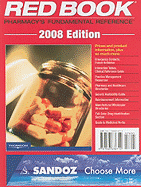- Joined
- Apr 10, 2008
- Messages
- 116
- Reaction score
- 0
They'll be cutting Medicaid in 44/111 stores in the state.
http://www.reuters.com/article/domesticNews/idUSTRE52T7KA20090330
Something tells me CVS will use this to promote their PBM business...and of course the Health "Reform" Czar will use it as a plug for that one PBM she sits on the Board of Directors for...oh what's the name? You know, that one that was fined XXX Million for ripping off the government?
http://www.reuters.com/article/domesticNews/idUSTRE52T7KA20090330
SEATTLE (Reuters) - Drugstore company Walgreen Co said on Monday it would pull almost half its pharmacies in Washington state from the U.S. Medicaid program in protest against the state's plan to cut reimbursements for drugs.
Cash-strapped Washington state plans to insist on cheaper, generic drugs for low-income Medicaid clients whenever available and equivalent to brand-name drugs, and is also cutting the rate of reimbursements on all drugs to pharmacies which supply them.
Cutting the reimbursement rate of generic and brand-name drugs would severely impact the "economic viability of doing business in Washington," Walgreen said in a statement.
Walgreen, one of the largest U.S. pharmacy chains, is to withdraw 44 of its 111 pharmacies in the state of Washington from the Medicaid program. Medicaid provides health insurance to low income individuals.
Unlike Medicare, the federal health program for seniors, Medicaid is partially funded by states. In order to cut the costs of the program, Washington state announced last week it would cut Medicaid reimbursements for brand-name prescription drugs by 6 percent, effective on Wednesday.
Walgreen said it would withdraw the 44 pharmacies from Medicaid as of May 1, a month after Washington introduces its plan. It said those pharmacies represent more than 60 percent of its total Medicaid business in the state.
There is a chance other pharmacies such as CVS Caremark Corp and Rite Aid Corp will follow suit in pulling out of Washington's Medicaid program.
Something tells me CVS will use this to promote their PBM business...and of course the Health "Reform" Czar will use it as a plug for that one PBM she sits on the Board of Directors for...oh what's the name? You know, that one that was fined XXX Million for ripping off the government?




